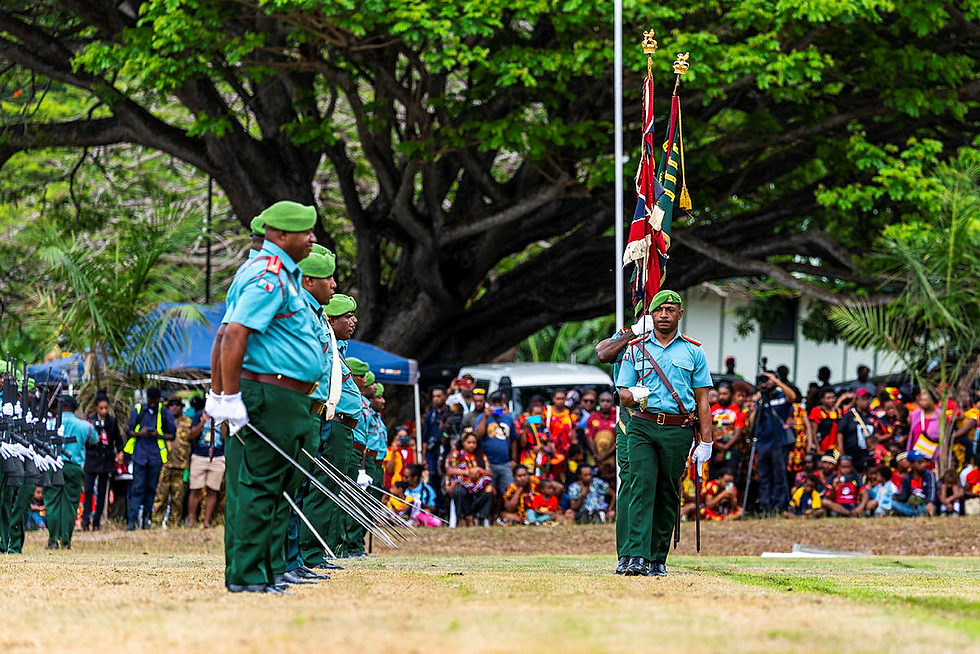Debating defence spending is prudence, not warmongering
- Jennifer Parker

- 2 hours ago
- 3 min read
19 November 2025 | Jennifer Parker

Image: Soldiers from Australia’s Special Operations Engineer Regiment, alongside partners from the US conduct deliberate pre-mission rehearsals in preparation for the next phase of Exercise Talisman Sabre 25, ensuring precision, cohesion, and mission readiness. Defence Images.
It is not warmongering to discuss how a changing world may affect Australia’s way of life, just as it did during World War II. It is prudent and responsible to have a national conversation about how we prepare for the changes outlined in Australia’s National Defence Strategy. And that preparation must include a clear-eyed discussion about defence spending.
We are repeatedly told by politicians on both sides that Australia faces its most challenging strategic circumstances since WWII. They are right. In plain speaking, this means that the potential risk of conflict, or a major military crisis short of it, is rising. And with it, the likelihood that our Australian Defence Force women and men may once again be called on to put their lives on the line for the nation.
It is in this context that outgoing RSL president Major General Greg Melick (retired) called on the government to increase defence spending during his Remembrance Day speech.
Former prime minister Paul Keating called Melick a ‘dope’ and accused him of wanting to drag Australia ‘into a military exchange with the Chinese’. This suggests a deeply unserious grasp of our strategic reality. More troubling, it is disrespectful to our veterans from a man who appears to be better known for his offensive outbursts than his time as prime minister three decades ago.
To reflect on the costs of war and the Australians who have served, without considering whether the next generation may be asked to do the same, is to risk leaving them unprepared. We must ask whether they would have the equipment and resources needed to prevail. Many respected veterans, strategists, former defence ministers and our major ally, the United States, believe they do not.
Defence spending in Australia now sits at about 2.04 percent of GDP, meaning just two cents in every dollar of our economy goes towards safeguarding our security in a rapidly changing world. While the government has committed to increasing this to about 2.3–2.4 percent by 2033–2034, this is hardly a historic high. During WWII, defence spending reached about 34 percent of GDP in 1942–43. Even setting that extraordinary mobilisation aside, in the 1950s it averaged above 3 percent, and throughout the Cold War it sat at roughly 2.7 percent. Yet we routinely describe today’s strategic circumstances as more dangerous than those of the Cold War.
Measuring defence spending as a percentage of the economy, the government argues, is unhelpful. While there is some truth to that, it nonetheless reflects where we place our national priorities. If defence is consistently under-resourced, we are not investing in the capabilities our ADF women and men need to succeed should they ever be called upon to defend the country.
At the same time, ministers maintain that it is better to focus on funding the capabilities we need rather than meeting an arbitrary target. While also true in one sense, it is equally clear that the ADF faces significant capability gaps. The reality is stark: Australia now has an extremely limited ability to defend critical infrastructure and ADF bases against missile strikes, a defining feature of modern conflict. While we plan new ships to protect sea lines of communication, the navy is struggling to generate the warships it already has due to sustainment pressures. Our capacity to clear mines from the approaches to our ports, a core task in WWII, is now almost non-existent.
I could go on. The list is long. The simple truth is that, on any meaningful metric, our ADF women and men do not have the capabilities they need to protect Australia in a changing world. We need to prioritise our security if we want to preserve the way of life we take for granted.
It is in this context that we should listen to the concerns of our veterans about defence spending and have a serious national conversation about how we support our ADF women and men in uniform as the world deteriorates. What we should not do is personally attack those who raise these issues, as we saw last week.
We are better than that as a country. Our veterans are seeking to protect the nation, just as they did in uniform, through highlighting the risks we face.



Comments